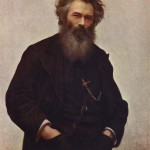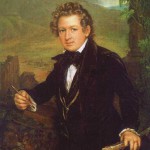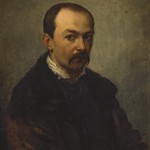Later, Vereshchagin broadened the title and gave it a political edge, dedicating the painting, as indicated by the inscription, to “all conquerors’ — past, present and future”.
However, despite his hatred for war as a social evil, Vereshchagin could not but admire the valour and heroism for which the Russian soldier is distinguished, and in contrast to the world of social injustice4 he shows the majestic harmony of Nature.
His “Shipka-Sheinovo” (1878—1879) is devoted to the Russo-Turkish War. This picture depicts the scene after the Russian victory at Sheinovo. General Skobelev, mounted on a white charger, rides along the line of soldiers. The soldiers, throwing their caps in the air, convey the glad tidings of victory. However, the artist, with realistic truthfulness, also shows the price paid for the victory: the foreground is sown with the corpses of those who fell in the battle.
Of considerable interest are the sketches of life and architecture made by Vershchagin during his travels, most of which are produced in paintings. Done in bright colours, painted with a sure hand and faithful to detail, they acquaint the spectator with the nature, life and architecture of the countries of the East.
Vocabulary
a conqueror — завоеватель
Vereshchagin could not but admire — Верещагин не мог не восхищаться
Valour — доблесть
injustice — несправедливость
majestic harmony — величественная гармония
charger — боевой конь
to convey — выражать
tidings — pi. (книжн.) новости, известия
the foreground is sown with the corpses of those who fell in the battle — на переднем плане картины изображены трупы тех, кто пал в этой битве
to acquaint (with) — знакомить с





